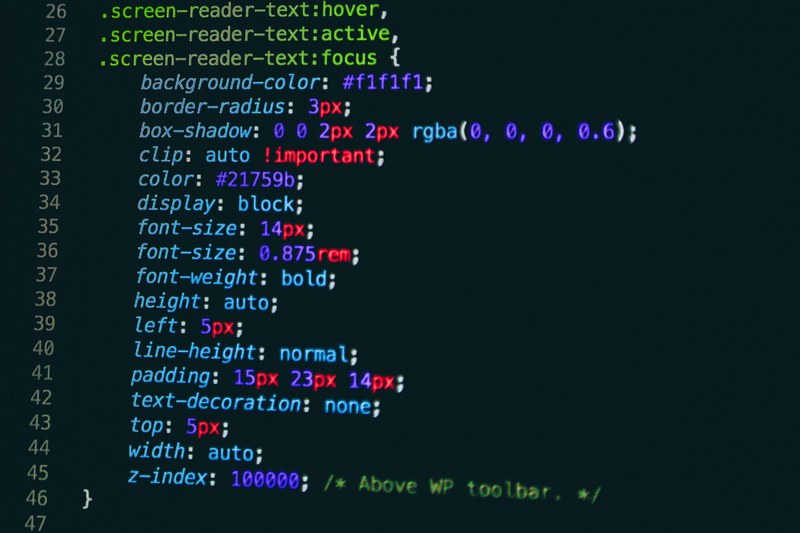CSS
What is CSS?
Definition:
“Cascading Style Sheets” (CSS) is a programming language used in web development to control the presentation and layout of HTML (Hypertext Markup Language) documents. CSS plays a crucial role in defining the visual style of a webpage, including aspects such as fonts, colors, spacing, and positioning. It operates as a separate layer from HTML, allowing developers to maintain a clear distinction between content and presentation.
Analogy:
Think of CSS as the interior decorator of a house. While HTML serves as the structure and layout, CSS adds colors, patterns, and styles to make the space aesthetically pleasing and visually appealing.
Further Description:
CSS provides a set of rules, often referred to as styles, which are applied to HTML elements. Key concepts and features of CSS include:
Selectors and Properties: Selectors target HTML elements, and properties define the visual aspects. For example, to style all paragraphs in a document, you might use the selector `p` and set properties like `color`, `font-size`, and `margin`.
Box Model: The CSS box model describes how elements are structured, including content, padding, borders, and margins. Understanding the box model is essential for controlling the spacing and layout of elements on a webpage.
Flexbox and Grid Layout: CSS provides layout models like Flexbox and Grid to create responsive and flexible designs. Flexbox allows for the creation of one-dimensional layouts, while Grid enables two-dimensional layouts.
Media Queries: Media queries in CSS enable the creation of responsive designs by adjusting styles based on the characteristics of the device or screen size. This ensures a seamless user experience across different devices, from desktops to mobile phones.
Why is CSS Important?
Enhanced User Experience: CSS contributes to a visually appealing and consistent user interface, improving the overall user experience of a website.
Separation of Concerns: By separating style from content (HTML), CSS promotes a modular and maintainable code structure, making it easier to update and modify the visual aspects of a website.
Cross-Browser Compatibility: CSS helps achieve consistent styling across various web browsers, ensuring that the presentation is similar for users regardless of their chosen browser.
Accessibility: Proper use of CSS supports web accessibility by allowing developers to create designs that cater to users with different needs, such as those using screen readers or other assistive technologies.
Examples and Usage:
CSS Frameworks: Bootstrap and Foundation are popular CSS frameworks that provide pre-designed styles and components, allowing developers to create responsive and visually appealing websites more efficiently.
Animation and Transitions: CSS enables the creation of animations and transitions without the need for additional scripting. For instance, you can use CSS to animate the opacity of an element or create a smooth transition effect on hover.
Customization of UI: Websites often use CSS to customize the appearance of form elements, buttons, navigation menus, and other user interface components, ensuring a unique and branded look.
Key Takeaways:
- CSS is a programming language used in web development to control the presentation and layout of HTML documents.
- It operates separately from HTML, allowing for the clear distinction between content and presentation.
- CSS includes selectors, properties, and features like the box model, Flexbox, and Grid for layout design.
- Media queries enable responsive designs, adjusting styles based on device characteristics.
- CSS enhances user experience, promotes separation of concerns, ensures cross-browser compatibility, and supports accessibility.
- Frameworks like Bootstrap facilitate efficient and consistent styling, while CSS allows for customization and animation of UI components.
Table of Contents





